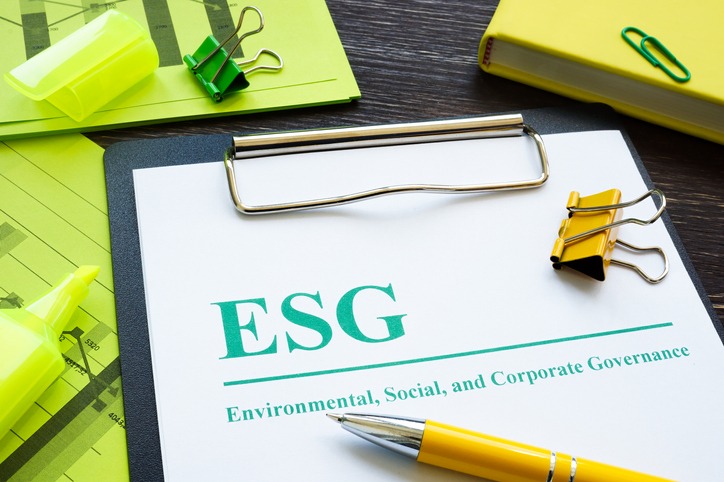How PR pros should lead on ESG
PR insiders talk about measuring this growing focus for business communications and how the PR role can prove the value of putting brand reputation first.

Mark: Tina, I think we’re experiencing a resurgence in public relations. The combination of rising societal expectations for corporations along with the rise of sensitive social issues is elevating PR’s professional standing. CEOs need PR help to communicate complex themes in this environment. What’s your opinion?
Tina: Absolutely, Mark. I agree. We see more companies taking a stand. That won’t revert any time soon and the demand from both internal and external stakeholders will only grow stronger based on the data. But what organizations take a stand on varies depending on the organization.
Mark: According to the 2021 Edelman Trust Barometer, society expects companies to take a stand and CEOs feel more and more that they should take a stand. For those who don’t know, ESG is an acronym for “environmental, social, and corporate governance” and refers to intangible assets within the enterprise. While it’s a framework for “doing good,” it’s also a score card by which investors grade companies as part of their financial decision-making. Once a niche sector, investments based on ESG criteria are soaring.
Tina: Yes, ESG is the acronym, but each letter on its own is very important and should not be lumped together. In our field, I see a lot of discussion on the “S” but not enough on the “E.”
Mark: So you’re saying that “PR is good at covering its S.” It’s been said before.
According to a June 27 Wall Street Journal article on socially responsible investing, ESG investing describes roughly one-third of all assets under professional management in the U.S. ESG is more than just a PR platform; ESG contributes to a company’s reputation, and PR is widely associated with reputation management.
Tina, as a high achiever, you must remember “the transitive property” from algebra. It stated that if A=B and B=C, then A=C. I got a “D” in algebra I and algebra II. If I had one dollar for every time algebra helped me throughout my career, I’d now have, well, one dollar! Algebra is finally paying off!
Tina: I’m impressed that you remember the “the transitive property.” I bet your teacher would be proud. Through the ESG scorecards investor evaluation services provide, financial performance is now connected with reputation through ESG in ways that were never quantified in the past.
Mark: That’s the opportunity. One challenge (among many) for public relations is that reputation is frequently considered “an intangible asset.” Now, investment counselors quantify ESG to make investing easier. Of course, executives must do what’s necessary to raise their scores. That involves doing the right thing and then increasing awareness about the good things you do. This is a natural place for PR.
Tina: Now that investors can monitor a company’s ESG performance, they can confront the issues which matter most to them. But it can’t be lip service, paying attention to all three of those components takes a lot of work and effort. I just finished Bill Gates’ “How to Avoid a Climate Disaster,” and he makes some excellent suggestions on what companies should do for the “E” component. Organizations are vital to make a societal impact on a global scale. It’s not going to happen through just governments, carbon offsets and additional regulations. But the companies who get out front in this space can make a real difference, which makes them more attractive to potential employees, investors and customers.
Mark: I’m with you. While it’s true that more and more investors want to support companies who score well, their primary focus is on good returns. It’s still an investment, after all. That’s one reason why corporate communication is so important! We need to tell our performance and purpose stories (to borrow from PepsiCo).
Tina: Delivering both good deeds and good performance are not at odds with one another—companies can do both through action, good management and a strong communication plan.
Mark: As the importance of reputation goes up, and the ability to quantify its impact on shareholder value improves, the role of corporate communications rises. One ESG trap is the vagueness around how it’s defined. There are no universal guidelines for what ESG means nor how it’s measured and reported. Companies have a lot of leeway for “selective reporting” and are vulnerable to accusations of “spin.” As professional communicators, we must keep watch.
Tina: Ugh, spin is my least favorite “S” word. I think the metrics are getting better, especially where the “E” and “S” are concerned.
We didn’t talk much about the “G” or corporate governance, but more communication executives are taking a leadership role. The public relations field has never been as important as it is today and helping with the ESG function increases our strategic value.
Mark: Well said, Tina. And with that, I rest my case.
Tina McCorkindale is the CEO of The Institute for Public Relations. Visit www.instituteforPR.com to access free informative content on ESG and other topics.
Mark Weiner is the Chief Insights Officer for Cognito. His new book, “PR Technology, Data and Insights” was just released.







Like PR Daily columnist Katie Paine who is expert at measuring and reporting PR success, these two can help you recognize where you are now and—crucially important—which parts of your program are bringing you the most success in getting where you want to go.
Also these people have been around long enough so they may persuade you to get not the results YOU would like most to produce but the results MANAGEMENT will like most.
We know more about PR than top management people so it’s tempting to set our own objectives. But Mark and associates have been around long enough to know more than most people about what makes management happy. So bringing these people in can guide you to not only get a lot but get what will bring you a lot of appreciation.
Also it saves you time for what you do best instead of spending time on what they do best.
Excellent POV from two excellent folks – we’ve been knee deep in measuring stakeholder perceptions of corporate ESG (Corp citizenship, social responsibility) via social data for some time now and have found that ESG scores (plus trust) have been found to be the best predictor of shareholder value in analysis we have conducted (and will publish soon). But as pointed out, measurement of ESG is still all over the place but we’ve been focused on classifying data and opinion according to some important and detailed measurement frameworks that have emerged from investment community that drill down to drivers and sub drivers. What we’ve found is that measurement of “trust” is essential here (as opposed to just sentiment) as we’ve found it to be the critical variable — stakeholders may “like” an announcement but need to see real tangible progress to “trust” — there is much healthy skepticism esp in this era of greenwashing/woke washing etc) .
We also entirely agree that there is a critical and important (and still often unfilled) need for PR to align strongly and step into this with their heads of sustainability/responsibility etc and understand clearly the perception gaps between internal efforts and stakeholder perceptions to inform a strategy – because in the end we can now quantifiably demonstrate and measure its fundamental role in how it contributes to reputation and specifically that (transitive) impact on shareholder value. Details to come but thank you both for raising awareness of this. Its a tremendous opportunity and need that I hope the industry will step into.